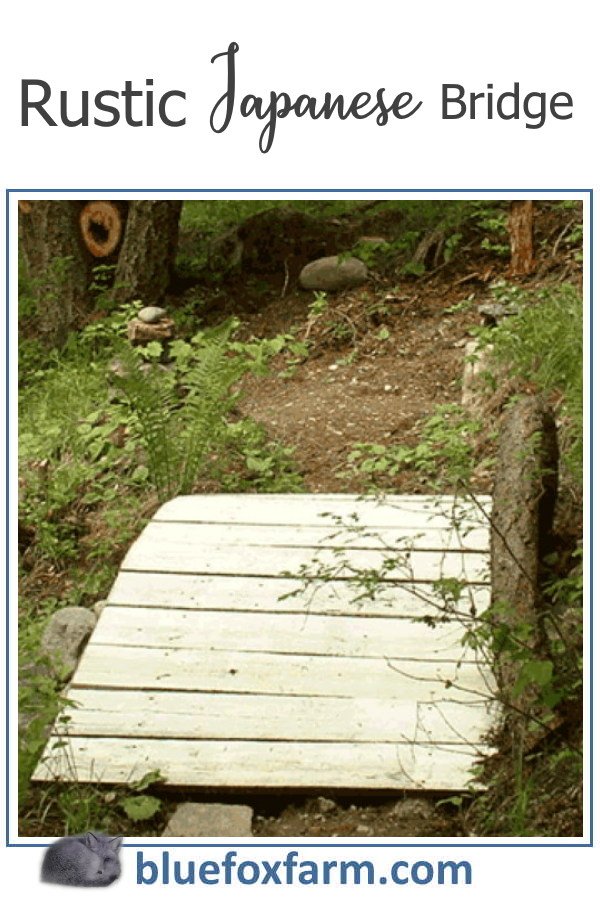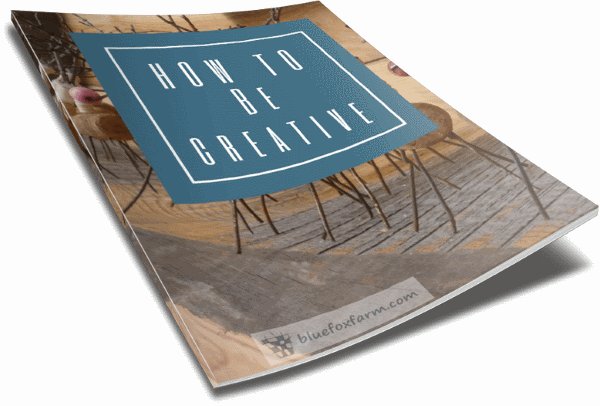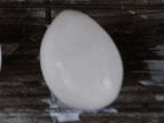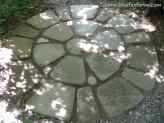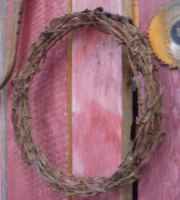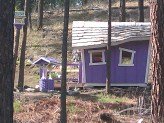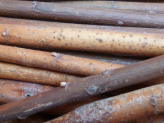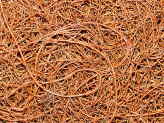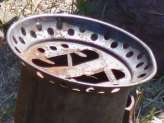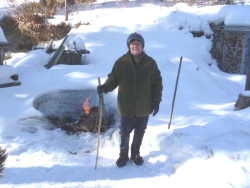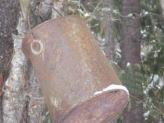Rustic Japanese Bridge
A Unique Design Feature In The Garden
This was a project that just sort of morphed. The genesis of the rustic Japanese bridge was a twisty tree that was on the property.
Trees like this are often found growing in hilly terrain, such as a mountain side where there is often a lot of snow. When the tree is just a sapling, the snow and gravity bend it over, and the twist evolves as it tries to right itself.
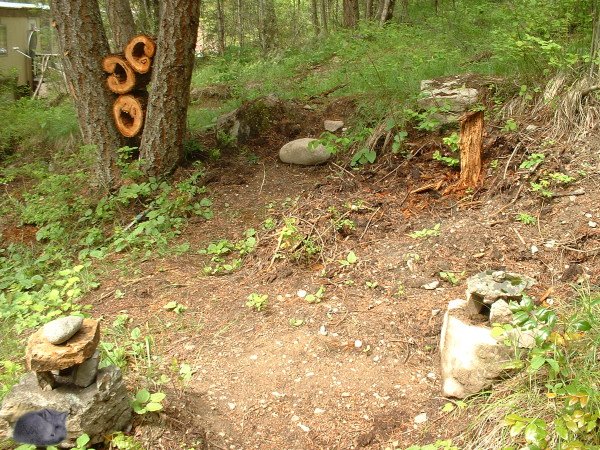 The site for the rustic Japanese bridge showing several lanterns
The site for the rustic Japanese bridge showing several lanternsI had been picking away at this area for a while, rearranging the rocks to make a channel, which I lined with a narrow piece of EPDM (rubber) pond liner.
It made a steep streambed, which I planned to make into a water feature with a pump and all that jazz, but I didn't get quite that far. It did look like a mountain stream gushing down the hillside even without actual water.
Do you know this kind of bridge? You see them often in Japanese gardens, and old woodcuts and paintings.
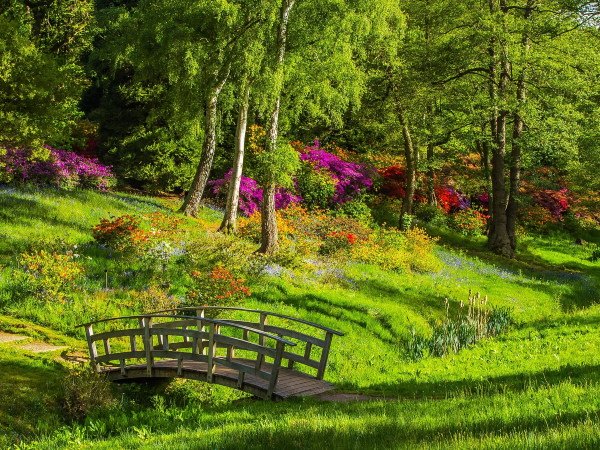 A delightful meadow with many brightly coloured flowers
A delightful meadow with many brightly coloured flowers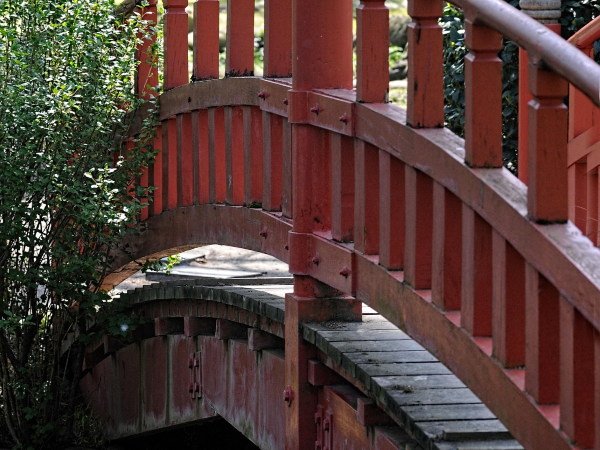 Red is a traditional colour for these bridges
Red is a traditional colour for these bridges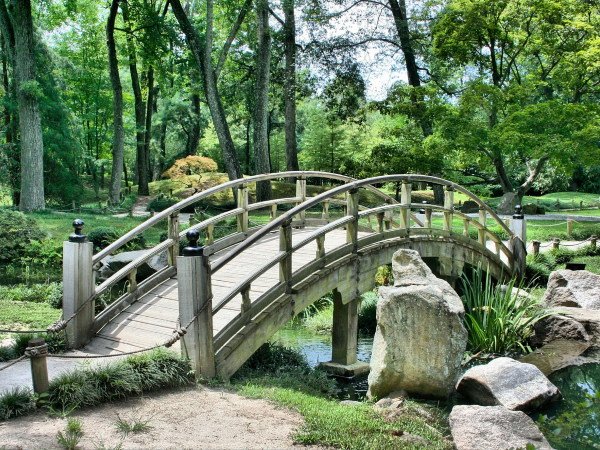 A real Japanese garden, with all the fixings
A real Japanese garden, with all the fixings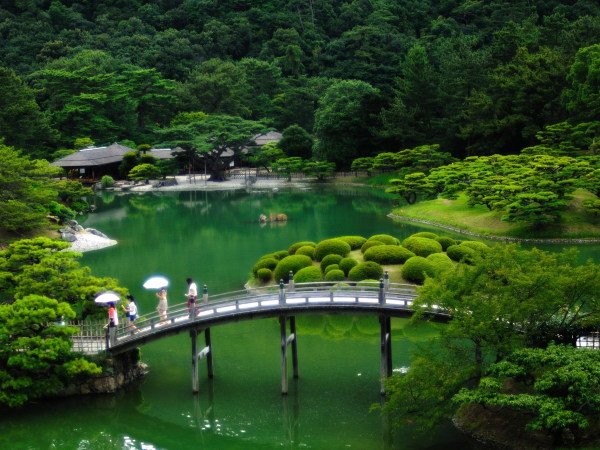 The green water and cool greens of the foliage are soothing and restful
The green water and cool greens of the foliage are soothing and restful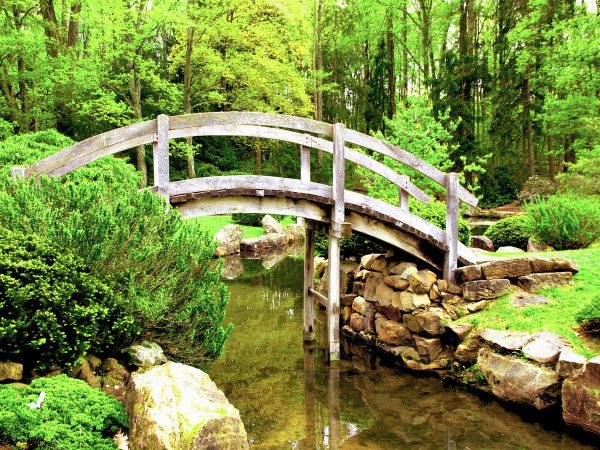 Sometimes these bridges are over a dry streambed, other times a real live stream
Sometimes these bridges are over a dry streambed, other times a real live stream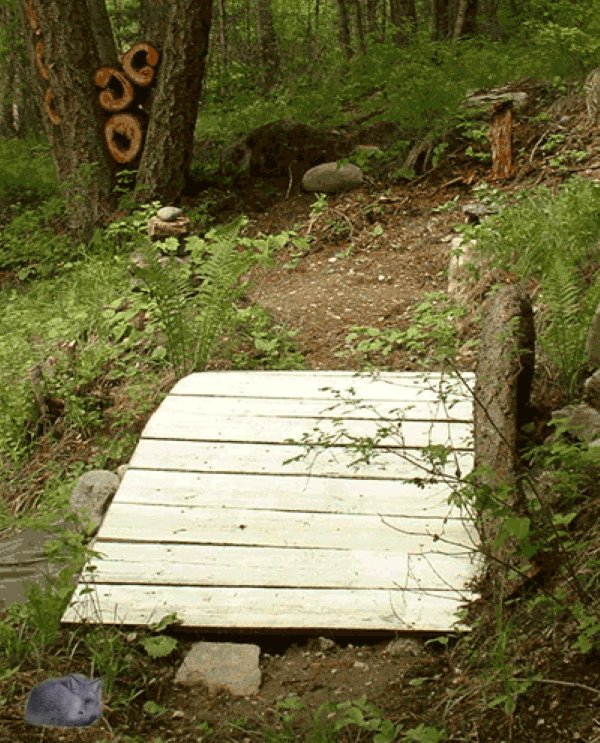
I chose many rocks that appealed to me (if they had moss or lichen on, or were very flat, or had interesting shapes) and made them into Japanese style lanterns or cairns.
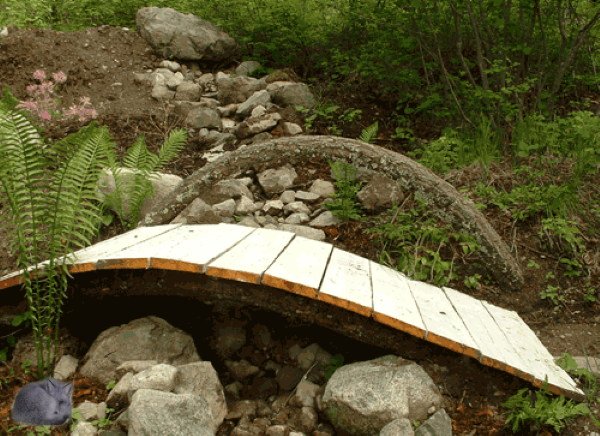
We found several small Douglas fir trees in the same area, with similar twists to them.
We used one for the bridge, here you can see that it's not a completely symetrical arch. The other one is a rustic handrail, which was too low to be called that, but it gives a sense of the edge so you don't get too close.
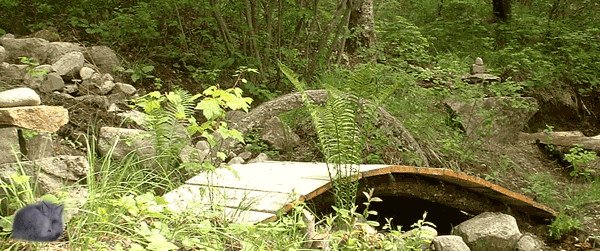
We had no hesitation in harvesting the interesting twisting trees for our own use - this one had been around for a few months before we found the exact right project.
The front side of the bridge is where the twisting tree goes. The other side, on the uphill side, is a piece of plywood cut to the same shape as the tree, so the pieces going across are in the correct format.
The boards are salvaged from an old fence, which had at least two coats of off-white paint. I didn't bother trying to remove it, although it could have improved it by making the surface less slippery when wet.
The boards, being cedar, are a good choice otherwise, as that wood lasts well even outdoors. In this case, the bridge is under large Douglas fir trees, and sheltered from the rain to some extent.
They were attached using nails to hold them securely onto the plywood at the back of the bridge, and the tree at the front. The ends of the tree and the plywood are wired on to rebar pounded into the ground.
I knew that I wanted the bridge to go to a shrine, which was just a few rocks piled up on a bigger one to make a very rustic Japanese lantern.
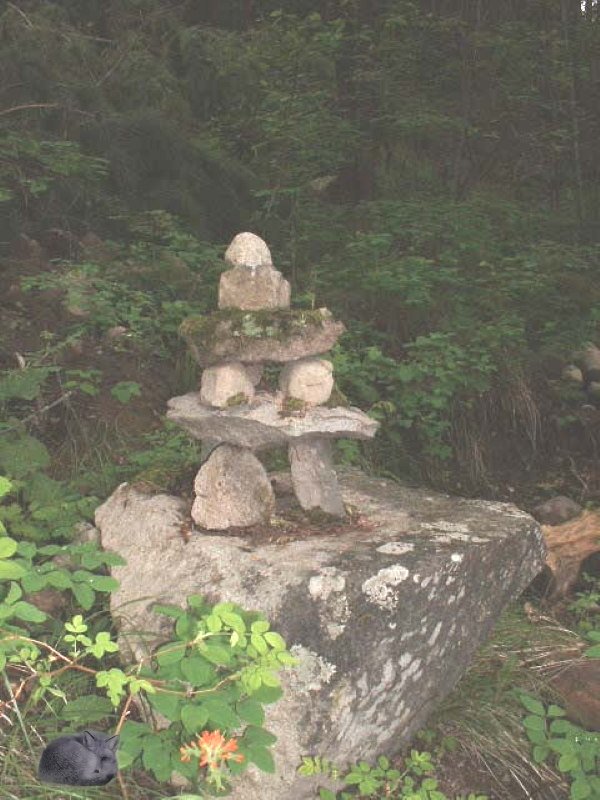 Rustic Japanese Lantern made of rugged flat granite slabs
Rustic Japanese Lantern made of rugged flat granite slabsThe bridge was a favorite wandering spot for a long time, until we moved. Unfortunately, the extensive logging that was done to fall danger trees close to the house did some damage, so I'm not sure if the new owners did anything with the area or not. I'm sorry about that, I sure enjoyed it while we were there.
Learn what it takes to be creative - we all have the gene but how do we develop it? Get the free guide!
Fill in the form below for your copy;
(Don't be disappointed - use an email address that will accept the free download - some .aol email addresses won't.
If you don't see your download within a few minutes, try again with another email address - sorry for the bother.)
